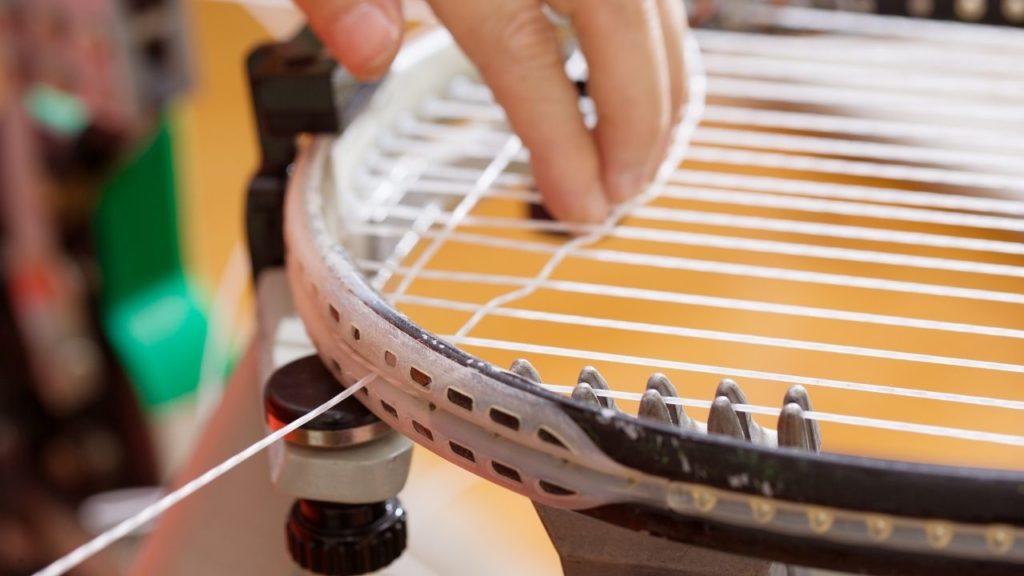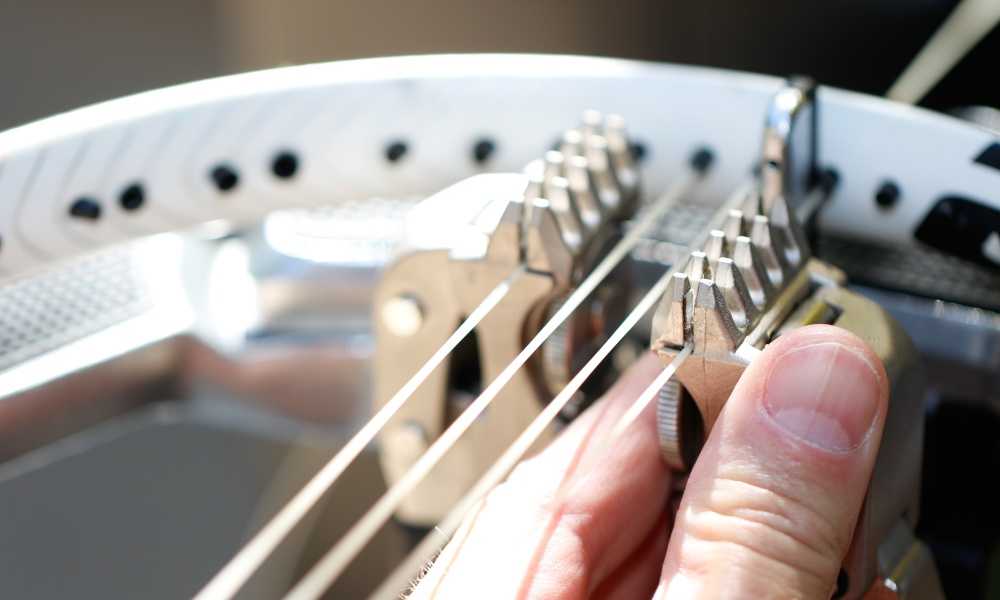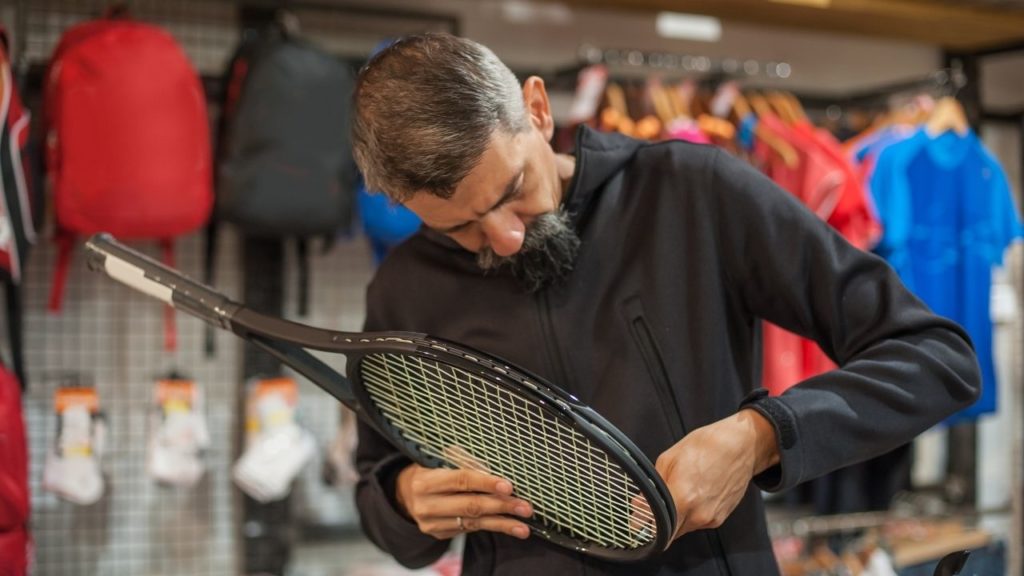The strings are the life and soul of your tennis racquet. If you’re on the lookout for a new set of strings, it’s good to know about the types of tennis strings.
Had you been given the power to pick out a custom engine for your next car, would you just go for any old engine without giving it much thought? After all, the functions of all car engines should be the same, right?
You would definitely do some research and try to figure out which engine would be the best suited to your needs. Not necessarily the cheapest option. Similarly, it makes no sense to spend hundreds on your racquet to pick any other old string set.
Strings play a crucial role in determining how the racquet feels and performs. In fact, they are the only part of the racquet which makes direct contact with the ball.
We aren’t saying you have to spend months sorting through the details of every string, but we suggest you spend a few minutes reading through this, just so you can get the right information to make a better decision.
In this article, we hope to clear the fog about tennis strings – the heart of your tennis racquet. We will also be going through the pros and cons of all types of tennis strings available, including construction and material.
In the end, a buyer’s guide is provided to help you choose the string type best for you. Let’s get going, shall we?

Types of Tennis Strings
In 1875, Babolat came out with the very first sets of natural gut strings. For decades on end, these natural gut strings reigned supreme, mostly because they were the only players on the field.
1950 saw the introduction of synthetic strings in the market and within a few years, they took over the lion’s share of the market of the tennis string industry.
Disclaimer: When we talk about the pros and cons of each string, our words are mostly generalities. There are certain qualities, like feel, which are subjective, so that will depend on how you feel about the tennis strings.
1. Natural Gut Strings
As the name suggests, these strings are made of natural things; in this case, the stretchy and fibrous serous membrane of a cow’s intestines.
At first, hearing the use of intestines in string construction might surprise you, but considering how they were introduced in the 1800s prior to the popularization of modern textiles, it sounds fairly reasonable.
Despite the odd material, tennis strings made from the natural gut are widely considered some of the best the market has to offer and has been a favorite of many professional players. For instance, Roger Federer.
Thanks to their highly elastic characteristics, natural gut strings provide a superior feel, comfort, and power. Additionally, these strings do a decent job of holding tension longer – a trait advanced synthetic material construction hasn’t been able to replicate today.
Moving to the con side, natural gut strings aren’t the most durable, are weak to moisture, and bears the most manufacturing cost. This is why it’s hard to find recreational or club players using gut strings. Only advanced players who are sure they can maintain these tennis racquets go for them.
My Favorite Natural Gut String:
Prices pulled from the Amazon Product Advertising API on:
Product prices and availability are accurate as of the date/time indicated and are subject to change. Any price and availability information displayed on [relevant Amazon Site(s), as applicable] at the time of purchase will apply to the purchase of this product.
Advantages:
- Optimum playability
- Good arm comfort
- Best tension maintenance
- Playable at very high tensions.
Disadvantages:
- Most expensive on this list
- Limited durability
- Spin
2. Synthetic Strings
Natural gut strings are the perfect and only option for some players, but many will find the price and variety of the synthetic strings better.
As you can understand from the name, this type of string takes a bunch of synthetic materials to offer a wider range for your tennis racquets. Manufacturers usually control the material alongside the makeup of the strings.
My Favorite Synthetic String:
Prices pulled from the Amazon Product Advertising API on:
Product prices and availability are accurate as of the date/time indicated and are subject to change. Any price and availability information displayed on [relevant Amazon Site(s), as applicable] at the time of purchase will apply to the purchase of this product.
Advantages:
- Economically priced
- Decent all-around choice
Disadvantages:
- Average performance overall
3. Multifilament Strings
In multiple ways, multifilament tennis strings can be considered the elder brother to synthetic gut strings. These strings were made to tackle the problems of synthetic gut strings, like durability.
As materials and technology evolved, manufacturers started building improved synthetic strings by weaving together thousands of fibers, mimicking the natural gut. The finished product is a string of amazing power, durability, and comfort.
My Favorite Multifilament String:
Prices pulled from the Amazon Product Advertising API on:
Product prices and availability are accurate as of the date/time indicated and are subject to change. Any price and availability information displayed on [relevant Amazon Site(s), as applicable] at the time of purchase will apply to the purchase of this product.
Advantages:
- Great playability
- Huge range of price points
- Replicates natural gut
- Softer on the hand
- Stellar tension maintenance
Disadvantages:
- Reduced durability for hard hitters
- Less control oriented
4. Polyester Strings
Polyester strings are perfect for experienced players who want the most control, durability, and spin.
The magic of this type of tennis string lies in its rigid monofilament construct, which offers strong players the control they need to swing bigger minus the fear of overhitting. When playing aggressive tennis, the upshot is significantly more confident.
Although typically underpowered and too firm for newbies, polyester string construction with increased softening agents produces a more user-friendly option for the newcomers.
My Favorite Polyester String:
Prices pulled from the Amazon Product Advertising API on:
Product prices and availability are accurate as of the date/time indicated and are subject to change. Any price and availability information displayed on [relevant Amazon Site(s), as applicable] at the time of purchase will apply to the purchase of this product.
Advantages:
- Lots of spin
- Lots of control
- Durability
Disadvantages:
- Harsher on the arm
- Low powered
- Loses tension quicker
5. Kevlar Strings
Kevlar or aramid fiber strings offer the maximum strength and durability to players but are subsequently the hardest strings out there.
This type of tennis string can be seen in chronic string breakers alongside nylon strings to decrease the tough feel.
While still available in the market, these strings have been replaced by their polyester counterparts fast, which is gaining popularity sharply.
My Favorite Kevlar String:
Prices pulled from the Amazon Product Advertising API on:
Product prices and availability are accurate as of the date/time indicated and are subject to change. Any price and availability information displayed on [relevant Amazon Site(s), as applicable] at the time of purchase will apply to the purchase of this product.
Advantages:
- Durability
- Adequate control
- Good tension stability
Disadvantage:
- Poor spin
- Poor feel
- Not the most comfortable
What Is the Difference Between 16g and 17g Tennis Strings?
The gauge will be the measurement of a string’s diameter or thickness, which falls between 0.60 to 1.80 mm according to industry standards.
String gauge offers many advantages and disadvantages for the player. For example the heavier or thicker the string, the more durable and long-lasting it is. Similarly, the thinner the string, the more potential it has for a spin.
15g, 15L g, 16g, 16L g,17g, 18g – this is the order from thickest to thinnest.
The “L” represents light. Here, 15L is equivalent to 16g, 16L is equivalent to 17g. The average size is 16g.
Between 16g and 17g, 17g, the thinner string, offers more spin due to the increased space between the strings.
You will feel the ball more on the racquet. Strings may lose their lifetime, but it depends on how hard or soft you hit.
How Often Should You Restring a Tennis Racquet?

After some time of using the racquet, you have to change the strings. They wear out with time and won’t give the best performance if they stay with your racquet for a prolonged time.
There’s a general rule of thumb to follow when restringing racquets that most players are aware of. In a year, you must restring your racquet according to the number of times you play with it in a week. So, for example, if you play thrice a week, the racquet must be restrung three times a year.
Aggressive ball strikers will wear out their strings more often, so they have to change the strings more. There are a bunch of other factors to consider here:
- Style of play
- Duration and frequency of play
- Level of competition
- String choice
- Comfort
- Budget
What String Should I Use For My Tennis Racquet?

Similar to tennis racquets, there isn’t a one-size-fits-all mantra in tennis strings. If you want to know the types of tennis strings that will suit you the best, you have to take quite a few factors into consideration.
Here are some to help you choose better.
1. Level of play
It won’t make sense for newbies to get the most expensive set of tennis strings. Naturally, as a beginner, it will be hard for you to realize the advantages of using a more expensive set, like a natural gut.
Synthetic gut strings with single or multiple wraps alongside a solid core are an ideal choice as you’re getting a durable set of strings at a reasonable price.
2. Frequency of play
If you play more, the strings are exhausted faster. They lose their tension or snap. Professionals can justify the elevated costs associated with a pricier set of good-quality strings.
But for most recreational players who set foot on the court frequently would benefit most from a durable set of strings that can hold up and offer great playability. Hybrid and multifilament strings will fit the bill perfectly.
3. Arm injuries
We suggest you get natural gut or multifilament strings if you’re experiencing issues or arm injuries. These strings effectively decrease stress on the arm while providing ample space for great gameplay.
4. Style of play
Personal preference is a big deal while shopping for anything. For instance, if you take your time hitting big groundstrokes on the baseline, you may think of getting a low gauge polyester string to increase spin potential.
An all-court player can benefit from a hybrid setup that promises a blend of benefits without compromising on feel.
Bottom Line
By knowing the common attributes of different types of tennis strings, you will be able to narrow down your top contenders and confidently pick the strings you need.
On top of that, the correct string can improve performance, helping you develop immunity against injuries like tennis elbow.
Remember: Not every type of tennis string will suit every player.

My name is Reagen and I started AllTennisGear (earlier AllTennisShoes) as a way to share my humble experience and help new Tennis players. Thank you for spending a few minutes of your day here and know that your feedback is always welcome.
